Grace Dines - Redefining Nature Through Abstraction
Where photography meets painting, and clarity dissolves into beauty
In a world saturated with hyper-detailed imagery and pixel-perfect clarity, artist Grace Dines invites us to embrace the beauty of the unfocused, the obscured, and the ambiguous. Her innovative approach to botanical art challenges our conventional understanding of how we perceive and interact with the natural world around us.
The Birth of a Unique Vision
Dines’ artistic journey began with a fascination for out-of-focus photography—those soft, dreamlike forms that emerge when traditional photographic rules are deliberately broken. What many photographers might consider technical failures, Dines recognized as profound aesthetic opportunities. These blurred, ethereal shapes became the foundation for an entirely new way of seeing and representing nature.
“I was drawn to the soft, obscure forms that were created from the lens,” Dines explains of her early exploration. This attraction to visual ambiguity would eventually evolve into a sophisticated artistic practice that bridges multiple mediums and challenges viewers’ perceptual expectations.
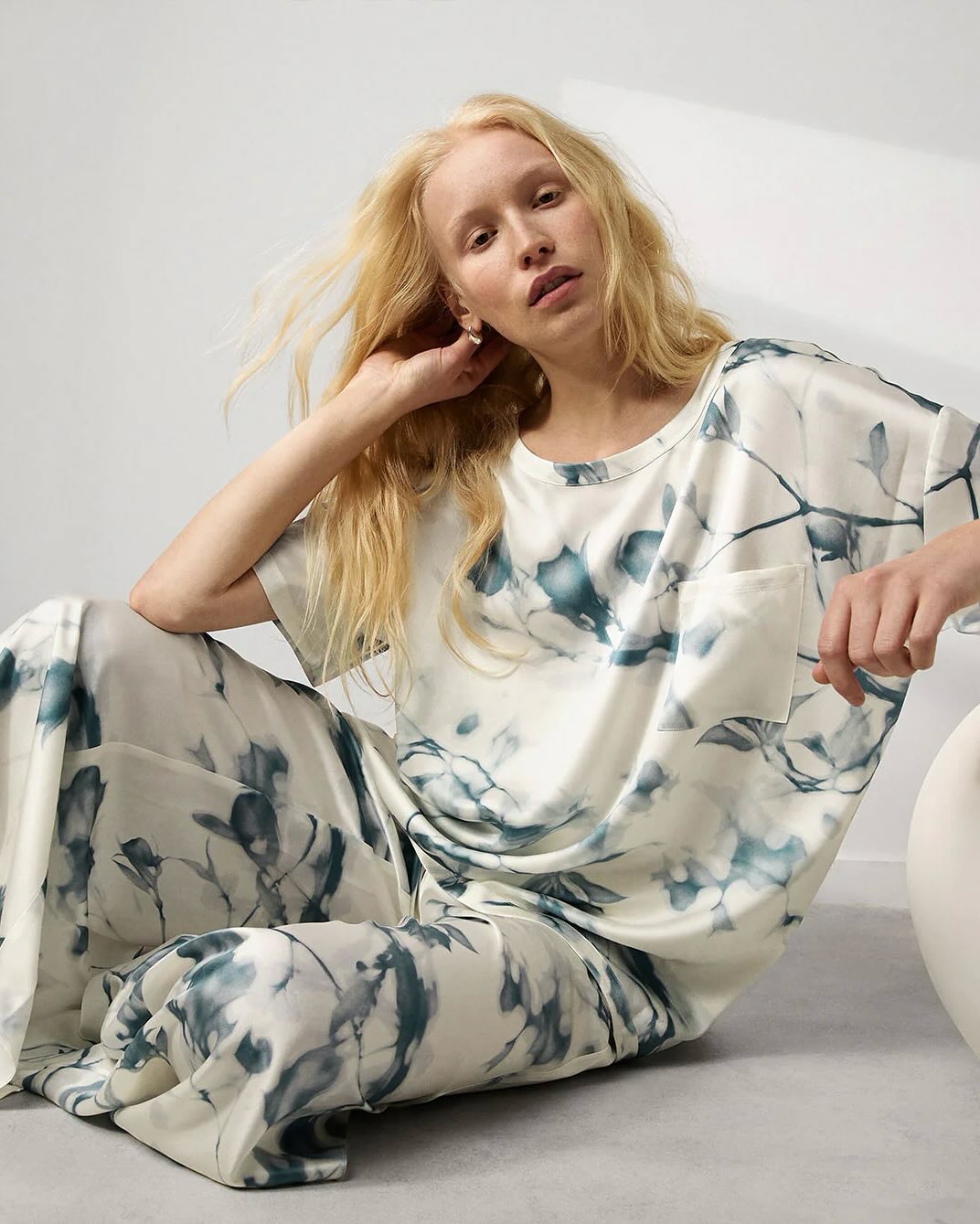
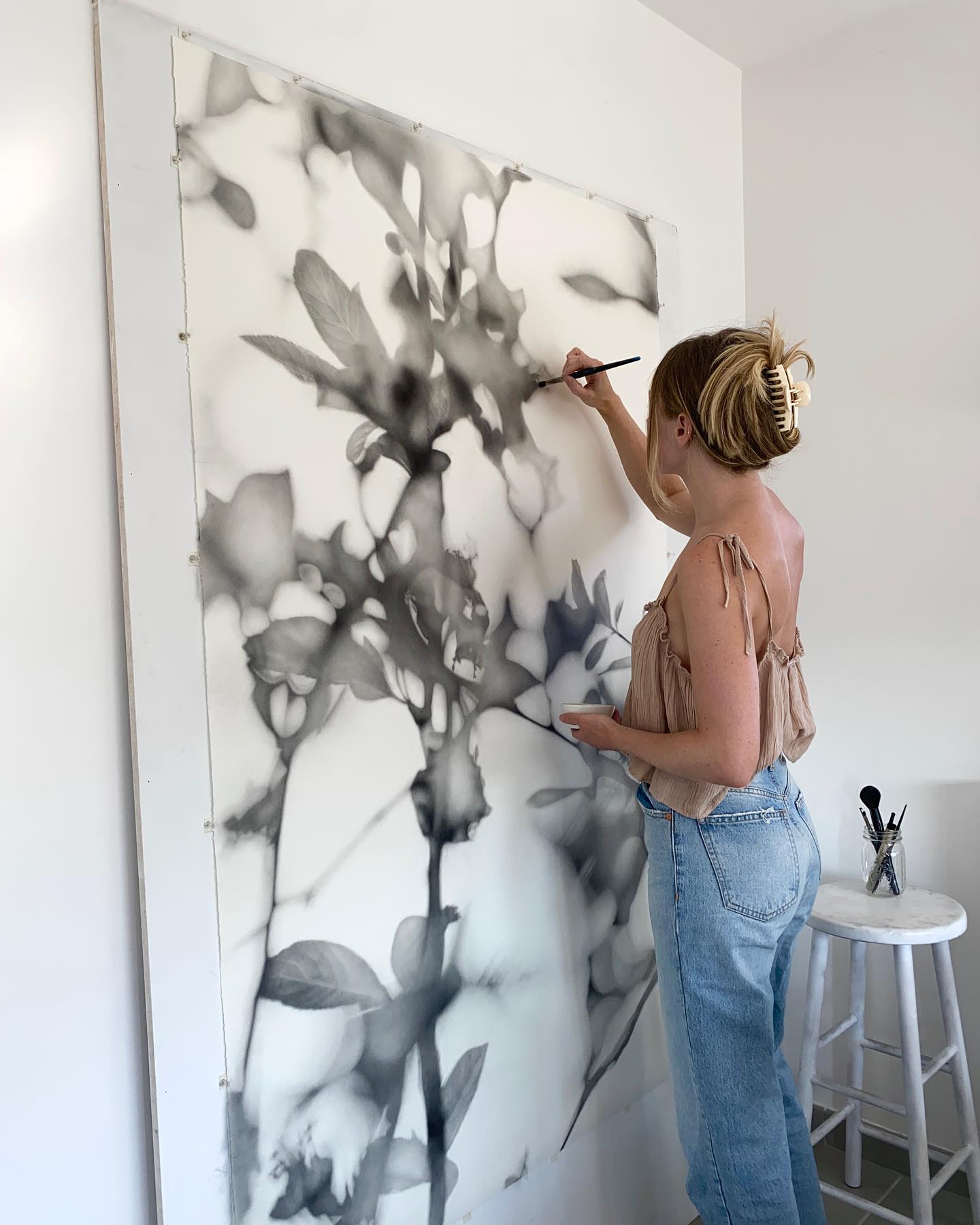
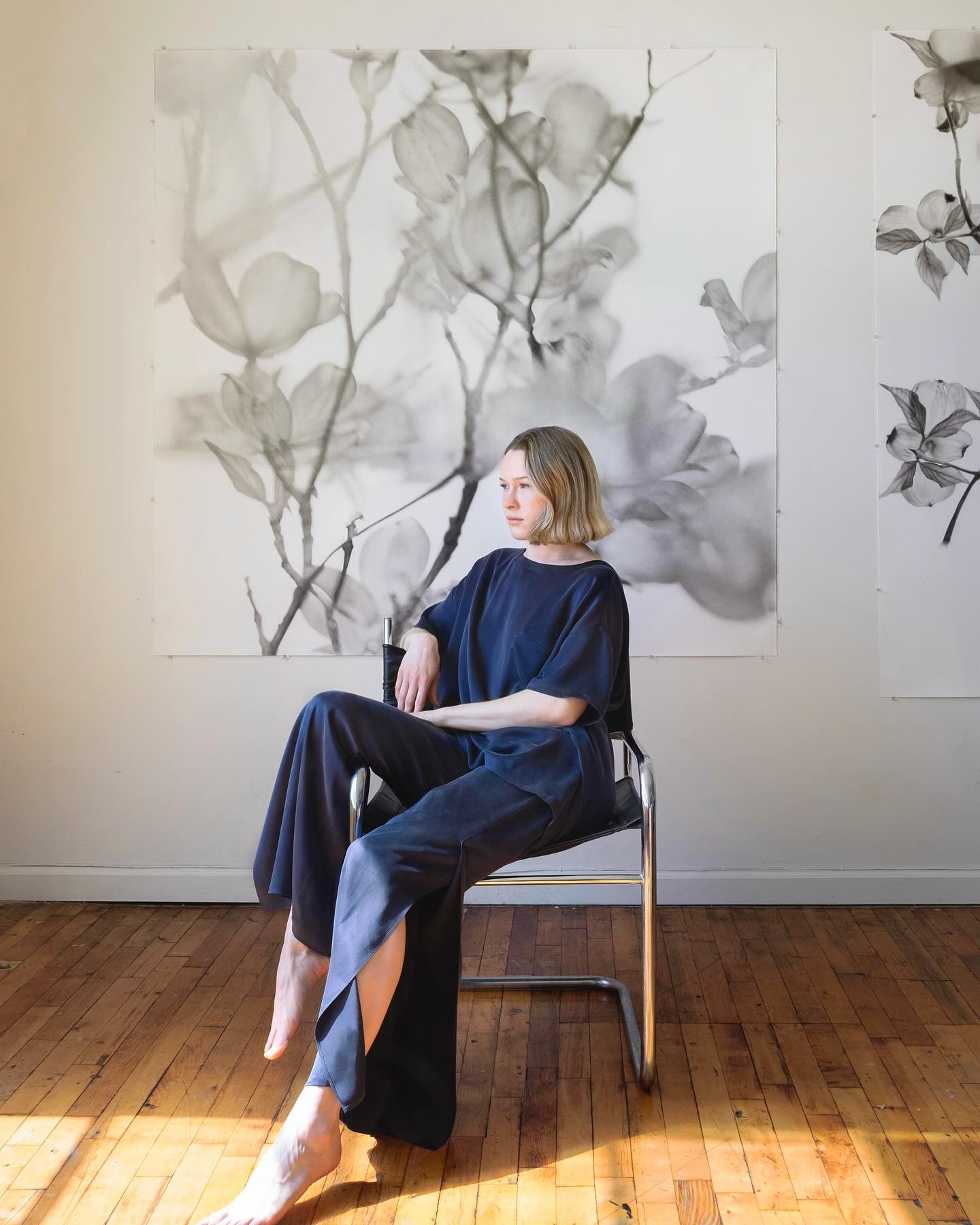
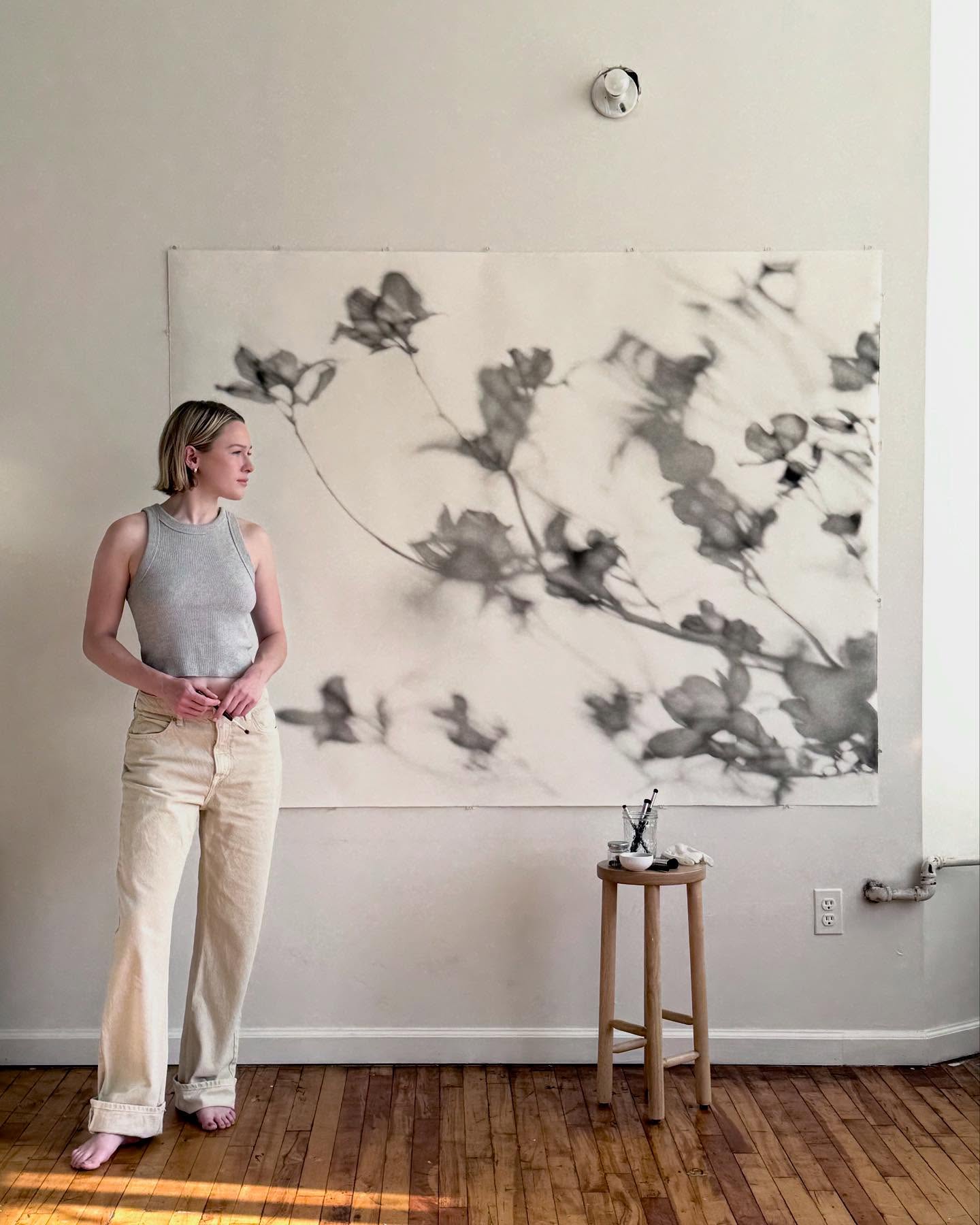
Working from her studio space, Dines has cultivated a practice that is both deeply personal and universally resonant. Her Instagram presence offers glimpses into this intimate creative world, where monumental botanical shadows dance across gallery walls and delicate powder pigments transform blank surfaces into dreamscapes.
The Scale of Contemplation
What becomes immediately apparent when viewing Dines’ work is her masterful command of scale. Her large-format pieces transform intimate botanical observations into immersive environments that envelope viewers completely. Standing before one of her monumental works—some spanning entire gallery walls—the experience shifts from simple observation to physical and emotional immersion.
The scale serves a deeper purpose than mere visual impact. By enlarging these softly focused botanical forms to human proportions and beyond, Dines creates spaces for meditation and reflection. Viewers find themselves dwarfed by ghostly eucalyptus branches and oversized leaf shadows, forced to confront nature not as something to be catalogued or controlled, but as a presence to be experienced.
Her studio process reveals the physical demands of working at this scale, with the artist often photographed reaching across vast expanses of paper, brush in hand, building layers of pigment that will eventually coalesce into these ethereal landscapes. The act of creation becomes almost performative—a dance between artist and surface that mirrors the organic growth of the botanical subjects themselves.
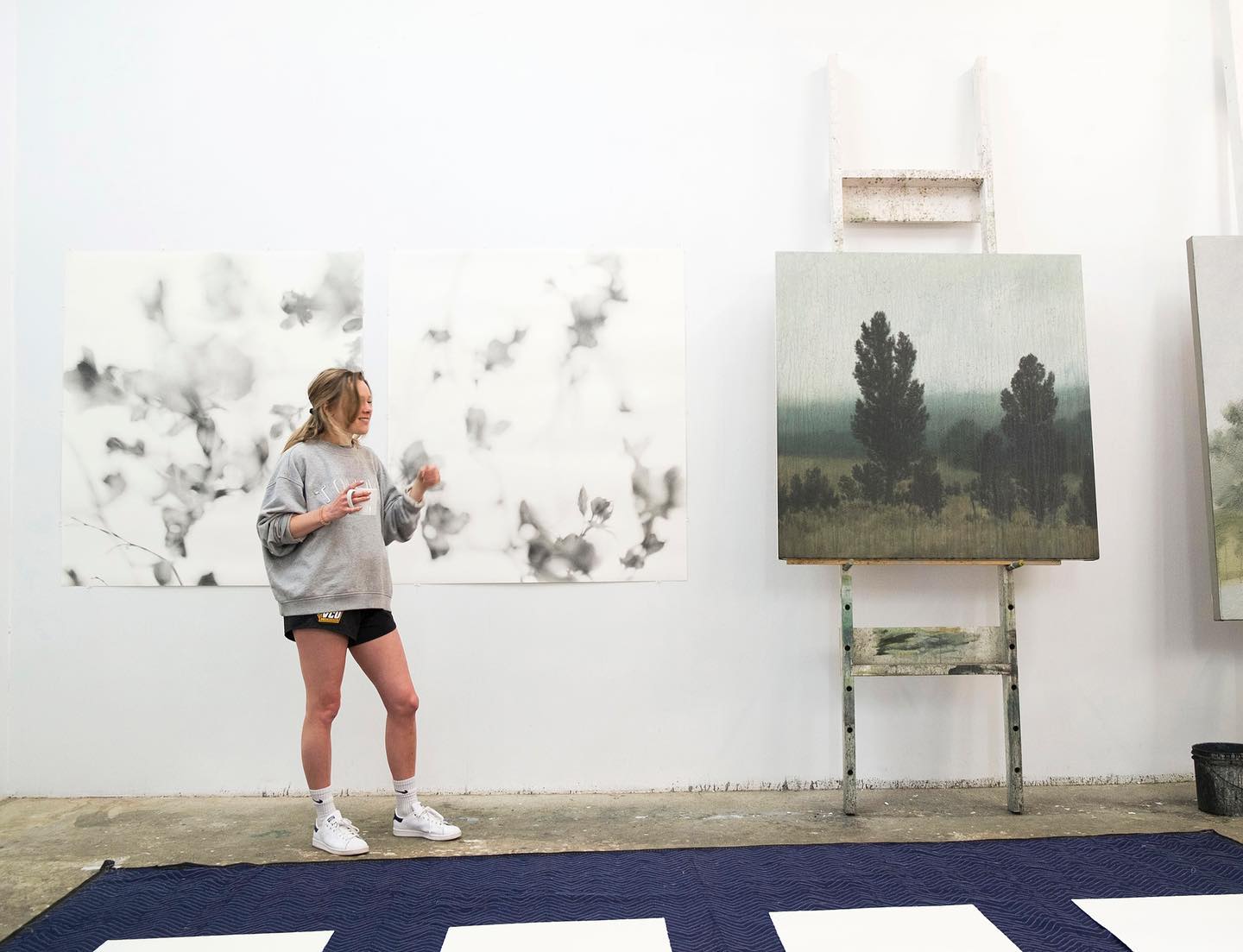
Beyond Traditional Botanical Art
Rather than capturing nature’s intricate details with scientific precision, Dines uses her camera as a tool for compositional discovery and subject abstraction. Through deliberate manipulation of depth of field, shutter speed, and focus, she transforms familiar botanical subjects into mysterious, evocative forms that exist somewhere between recognition and pure abstraction.
Her color palette reveals another layer of sophistication—from the monochromatic poetry of her black and white works to the unexpected introduction of cerulean blues that transform familiar leaf forms into aquatic dreamscapes. These blue-toned pieces suggest underwater botanicals or sky-reflected foliage, adding an element of environmental ambiguity that further distances the work from literal representation.
This approach represents a fundamental shift in how we might engage with nature art. Instead of celebrating the identifying characteristics that allow us to catalog and categorize natural forms, Dines strips away these visual anchors, forcing viewers to encounter her subjects on purely aesthetic and emotional terms.
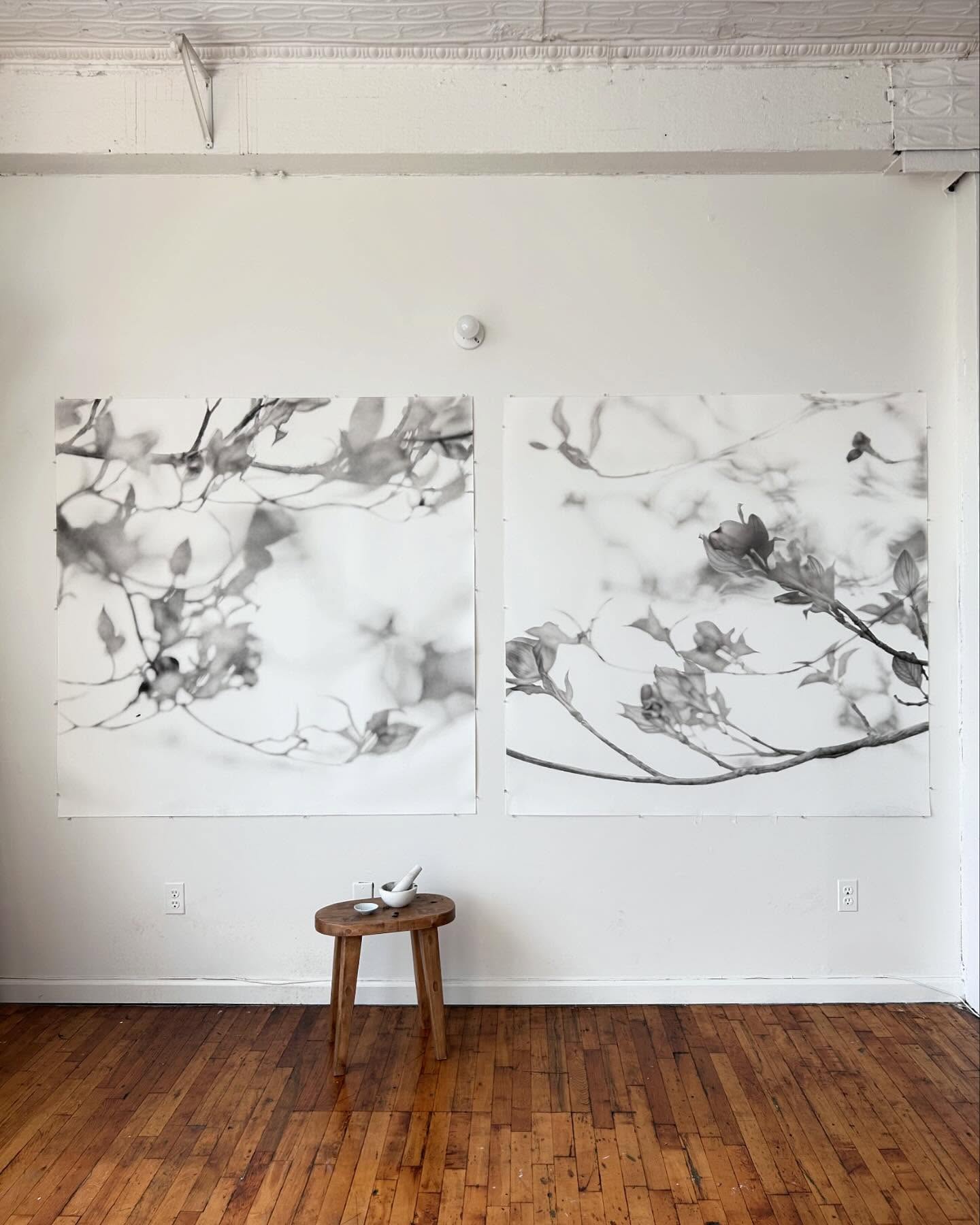
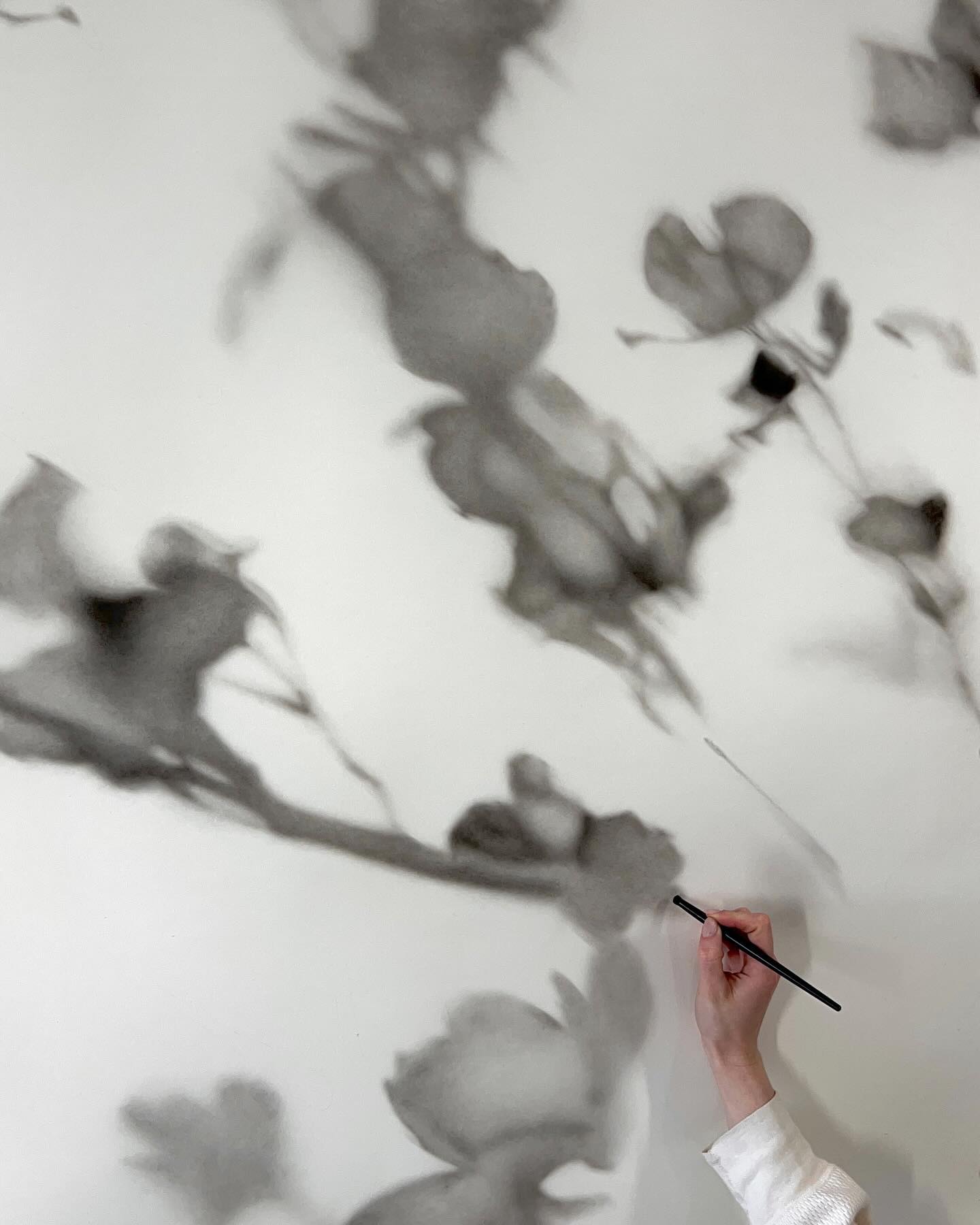
The Alchemy of Powder and Paper
The true magic of Dines’ work emerges in her studio, where photography becomes the starting point for an entirely different creative process. Using powder pigments applied to paper in carefully built layers, she translates her photographic discoveries into tactile, intimate works that hover between painting and drawing.
This medium choice is far from arbitrary. The delicate nature of powder pigment requires thoughtful care and precision, mirroring the contemplative approach Dines brings to her subject matter. Each layer adds depth and complexity, while the textural quality of the materials invites viewers to consider not just what they’re seeing, but how they might experience it through touch.
The paper itself becomes an active participant in the work, with its tone serving as an illuminating element that enhances the overall composition. This attention to material properties reflects Dines’ holistic approach to art-making, where every element contributes to the final perceptual experience.
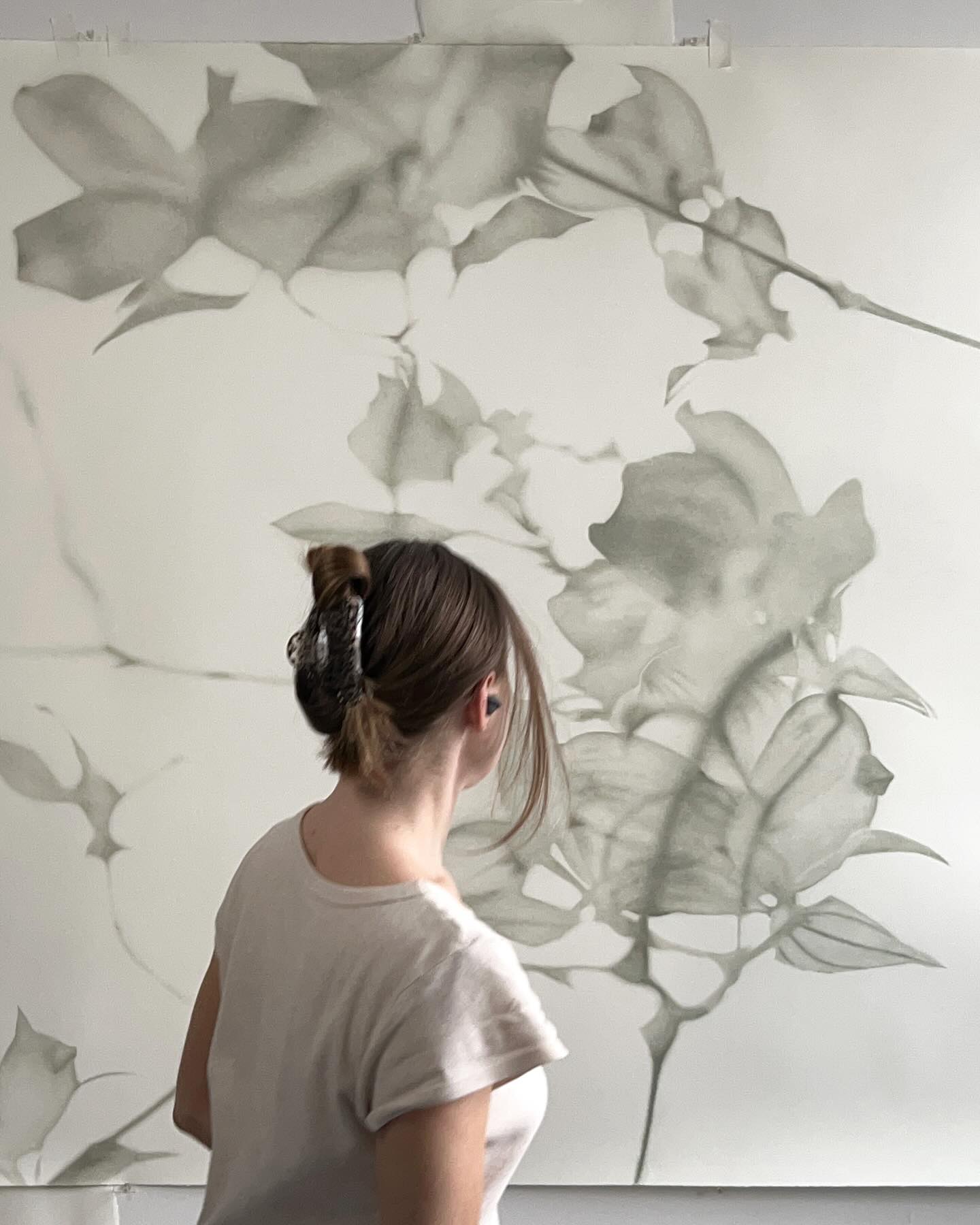
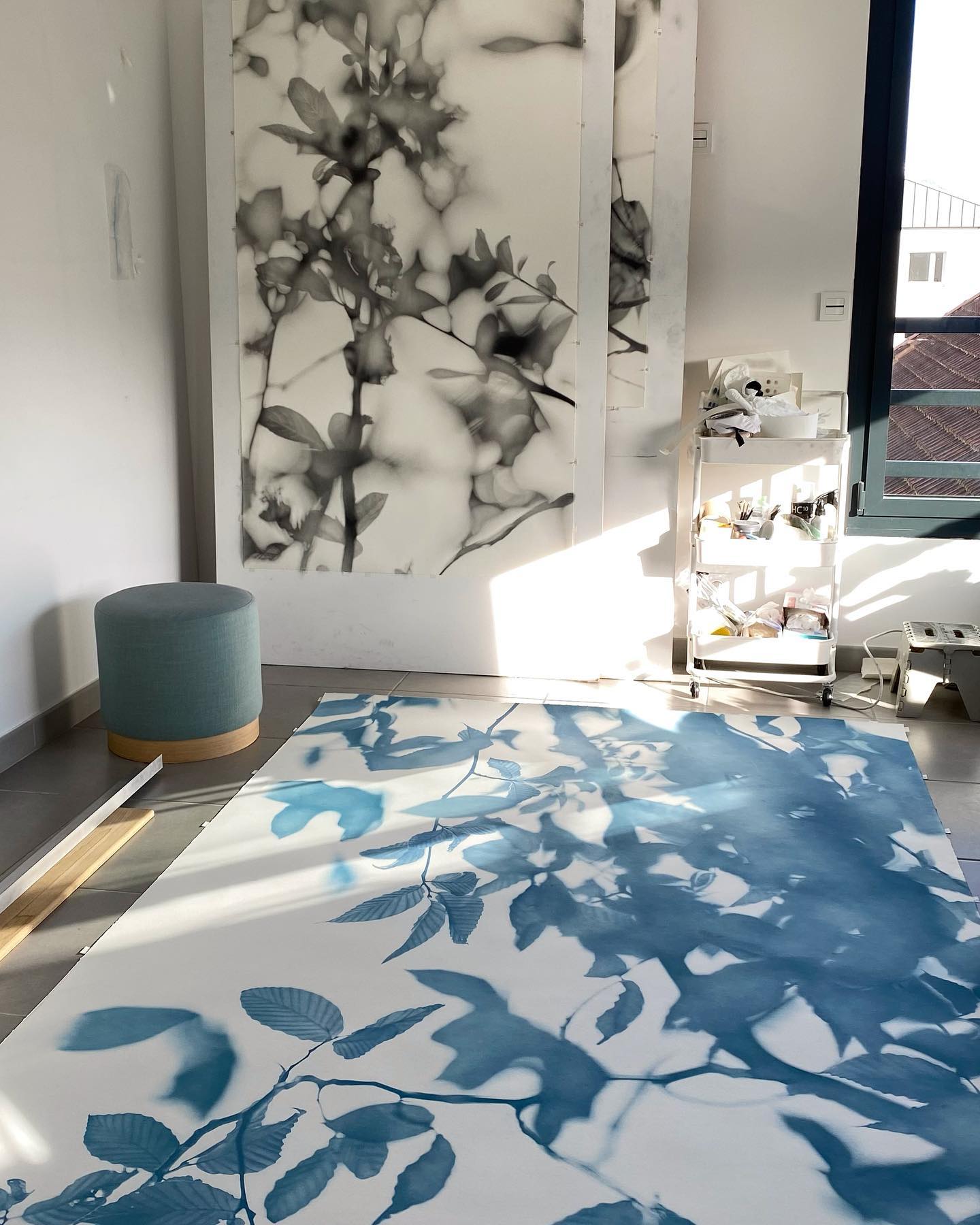
Questioning the Categories
One of the most intriguing aspects of Dines’ practice is how it resists easy categorization. Her works exist in the liminal space between photography, painting, and drawing—never entirely one medium or another. This ambiguity is not a weakness but a strength, reflecting the artist’s broader interest in challenging fixed perspectives and encouraging new ways of seeing.
“Whether her pieces are paintings or drawings is an unresolved declaration,” becomes less a problem to solve than a celebration of artistic possibility. In an art world often obsessed with definitions and categories, Dines’ work suggests that the most interesting creative territory might exist precisely in these undefined spaces.
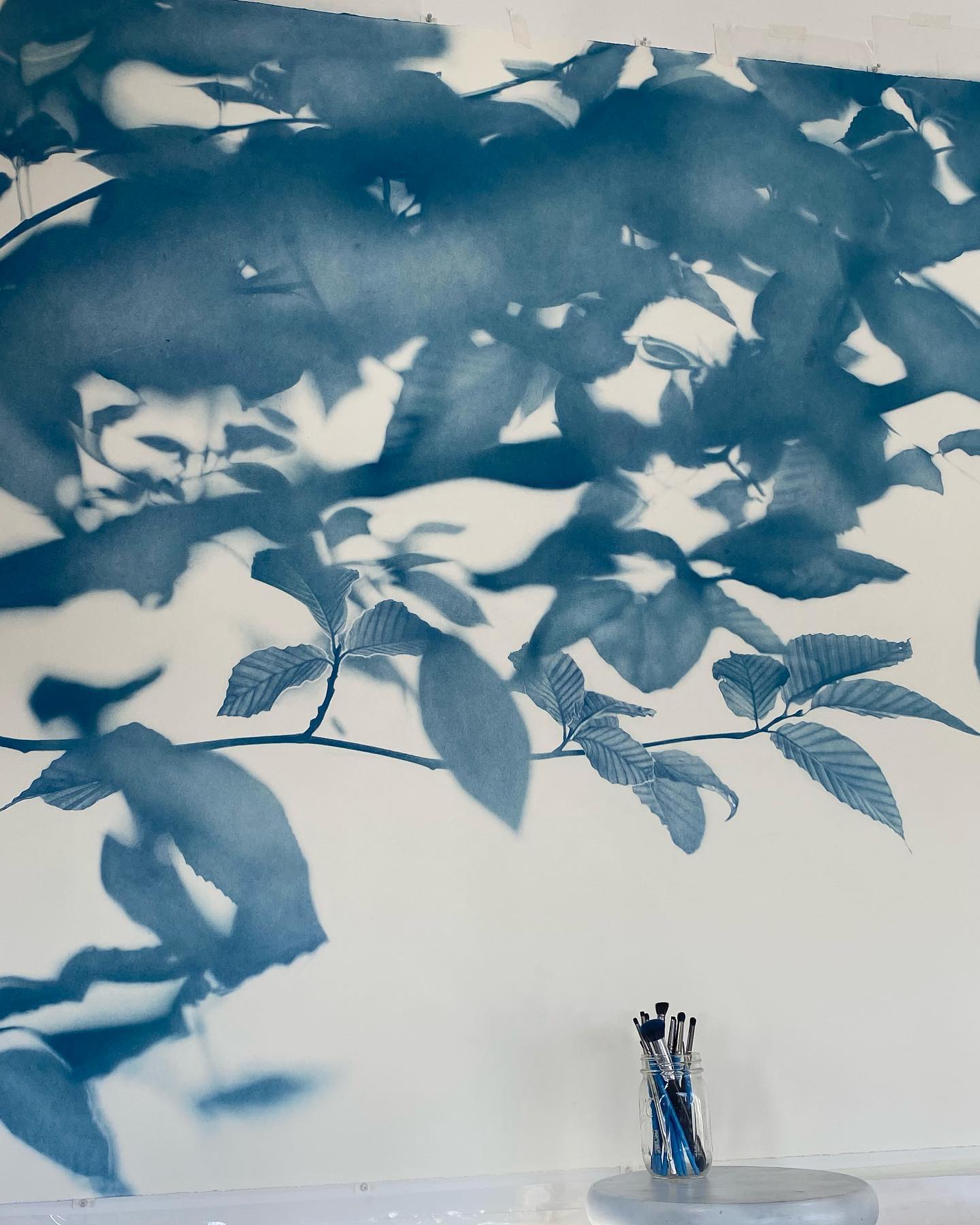
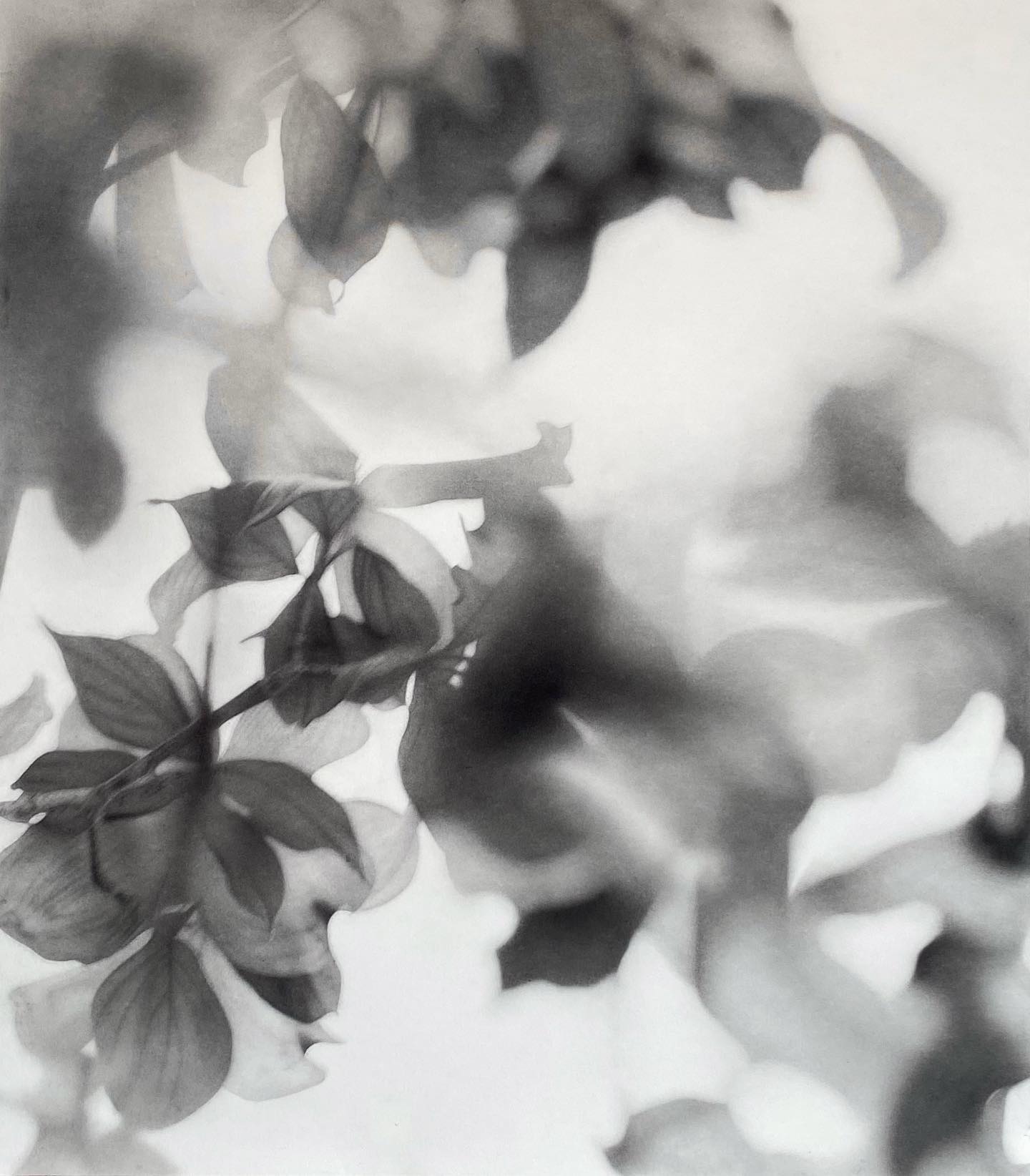
Transforming Perception
At its core, Dines’ work is about transformation—of subjects, materials, and most importantly, perception itself. By obscuring familiar botanical forms, she creates space for viewers to develop new relationships with nature that aren’t dependent on identification or scientific understanding.
Her process encourages what she calls “an embrace of the subjects’ ambiguous forms,” inviting viewers to find beauty and meaning in uncertainty rather than clarity. This approach feels particularly relevant in our current moment, when slowing down and developing more intimate, contemplative relationships with the natural world has become both a personal and environmental imperative.
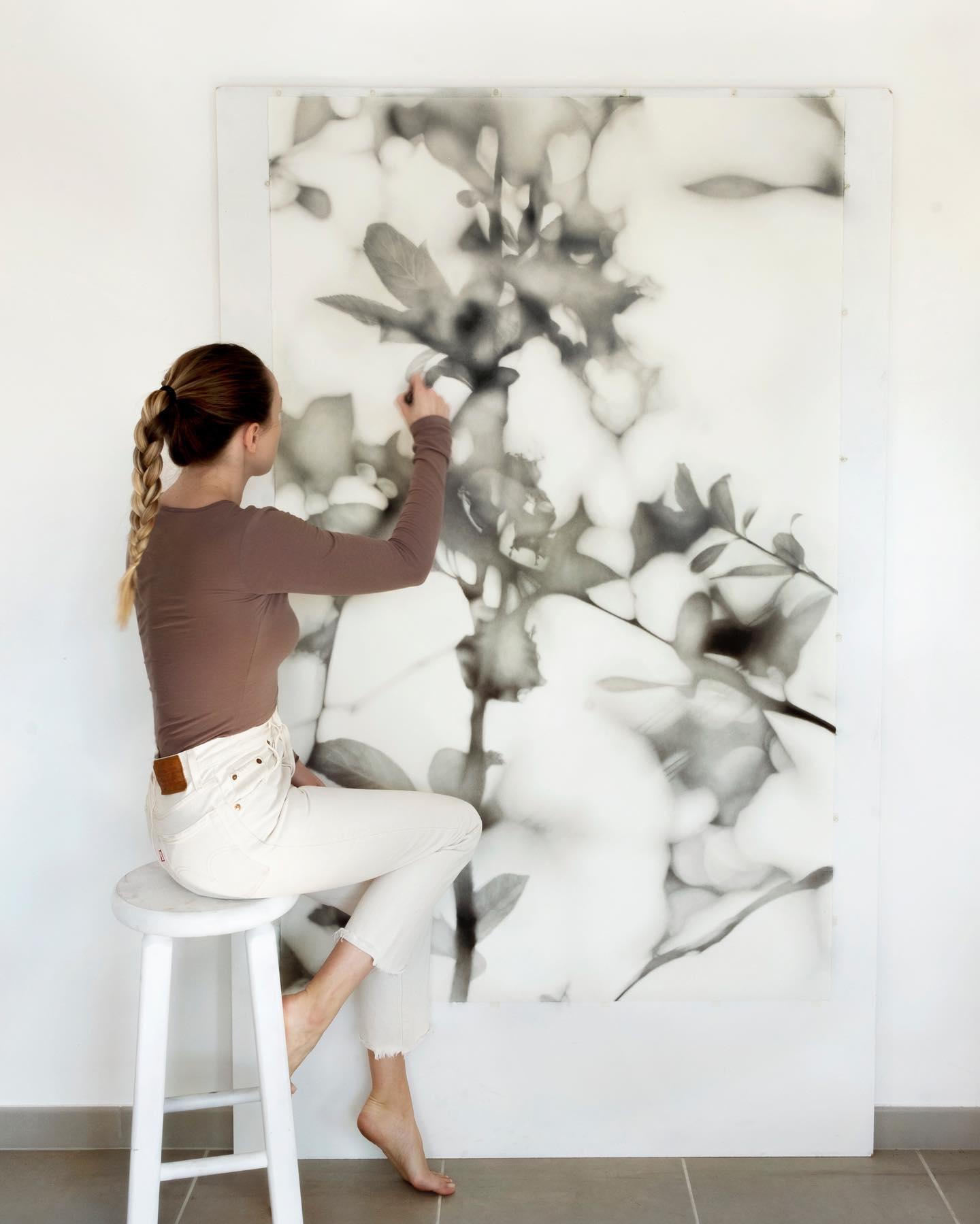
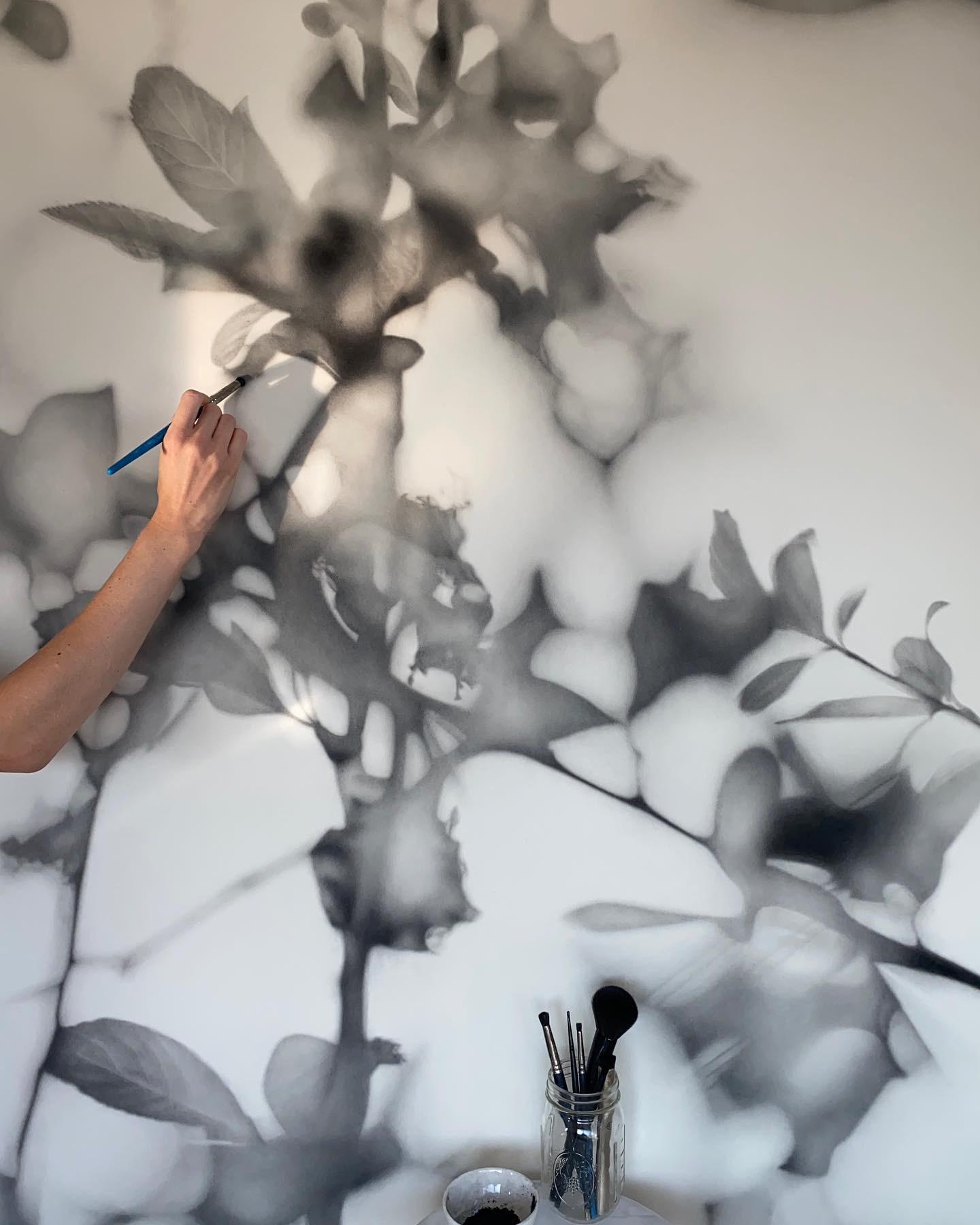
The Artist in Her Element
Behind-the-scenes glimpses into Dines’ practice reveal an artist completely immersed in her process. Whether seated contemplatively before a work in progress or stretched across a canvas nearly as large as herself, she embodies the meditative quality that infuses her finished pieces. These process shots capture something essential about her approach—the work requires not just technical skill but physical commitment and emotional presence.
The integration of her work into living spaces, as seen in her recent collaborations with fashion and interior design, demonstrates the versatility and livability of her aesthetic. Her botanical abstractions translate beautifully from gallery walls to intimate domestic settings, suggesting that the contemplative experience she creates can enhance daily life rather than existing solely in rarified art spaces.
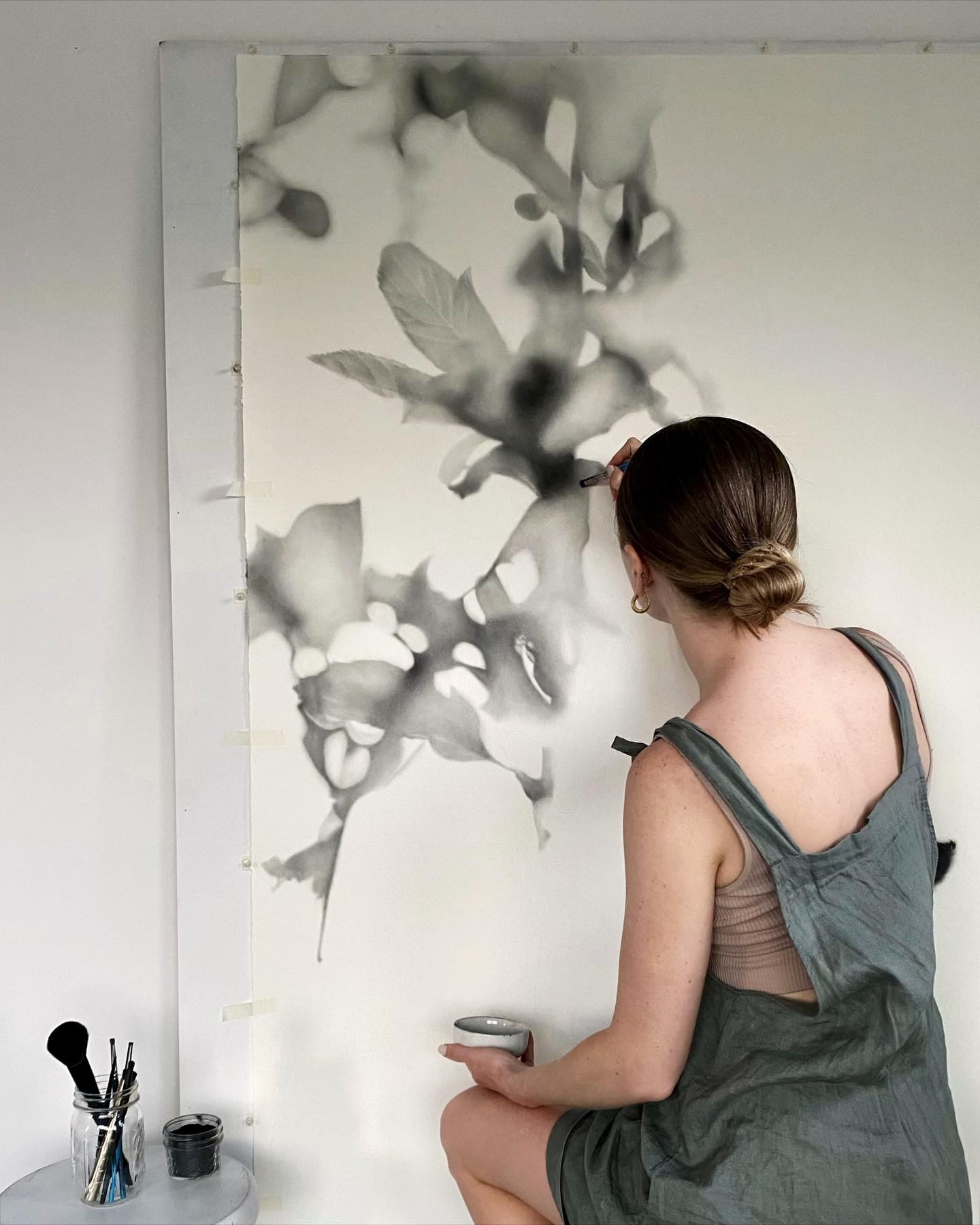

The Intimate Experience
The translation from photograph to powder pigment represents more than just a change in medium—it’s a move toward intimacy. The careful, meditative process of building layers of pigment creates works that reward close, sustained attention. Unlike the immediate impact of digital imagery, Dines’ pieces reveal themselves gradually, inviting viewers into a more patient, reflective mode of engagement.
This emphasis on tactile awareness and material sensitivity offers a counterpoint to our increasingly digital visual culture. In Dines’ work, the physical properties of paper and pigment become part of the artistic message, reminding us of the irreplaceable value of direct, sensory experience. The artist herself becomes part of this tactile relationship, often photographed in direct contact with her work—hands dusty with pigment, body language reflecting the physical demands of working at such scale.
A New Appreciation for Nature
Grace Dines’ innovative practice offers more than just beautiful objects—it provides a framework for developing new ways of seeing and appreciating the natural world. By stripping away the familiar visual cues that typically guide our perception, she creates space for wonder, contemplation, and discovery.
Her work suggests that there might be profound beauty waiting to be discovered not in nature’s perfect clarity, but in its soft edges, uncertain boundaries, and ambiguous forms. In a time when environmental awareness has never been more crucial, Dines’ approach offers a path toward deeper, more emotionally resonant connections with the natural world around us.
Through her unique blend of photographic exploration and material sensitivity, Grace Dines is creating art that doesn’t just represent nature—it transforms how we experience it.
Grace Dines’ work is currently represented in galleries across the country. With over 76K followers engaging with her artistic process on Instagram (@gracedines.studio), her influence extends far beyond traditional gallery spaces. To see more of her innovative botanical abstractions and witness her creative process, visit her studio website at gracedines.com or follow her ongoing projects on social media.
